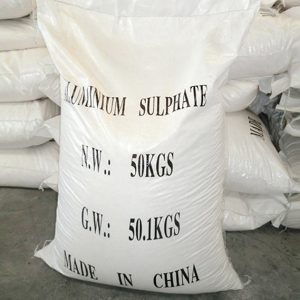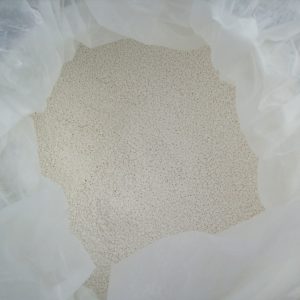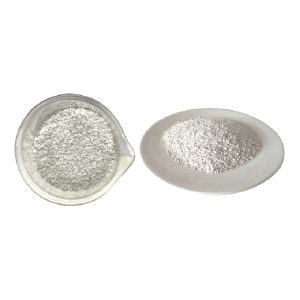Description
Non-Ferric Aluminium Sulfate is a highly versatile chemical compound that plays a crucial role across various industries due to its unique chemical properties. Often referred to as Alum in industrial contexts, this non-toxic, water-soluble compound has found applications in water treatment, paper manufacturing, and numerous other sectors. In this article, we will dive into the science behind Non-Ferric Aluminium Sulfate and explore its uses and advantages.
Non-Ferric Aluminium Sulfate is an inorganic compound with the chemical formula Al₂(SO₄)₃. It is a white crystalline solid or powder, devoid of ferric (iron) impurities, which differentiates it from its ferric counterpart. This absence of iron imparts the compound with high purity, making it particularly useful in applications where discoloration or contamination must be avoided.
The compound is produced through the reaction of bauxite (or other sources of aluminum hydroxide) with sulfuric acid. The resulting substance is then subjected to a purification process to remove iron contaminants, producing Aluminium Sulfate.
Key Properties
Appearance: Aluminium Sulfate is typically a white or off-white crystalline solid.
Water Solubility: It dissolves readily in water, forming a solution that is slightly acidic.
pH: Acts as an acidic agent when dissolved, with a pH level usually in the range of 3-4.
Non-Toxic and Eco-Friendly: Its chemical composition is considered safe for many sensitive applications, including water treatment.
Industrial Applications of Non-Ferric Aluminium Sulfate
Thanks to its unique chemical properties, Non-Ferric Aluminium Sulfate has become a go-to compound in various industries. Here are some of its main applications:
1. Water Treatment
By far one of the most prominent uses of Non-Ferric Aluminium Sulfate is in water treatment plants. As a coagulating agent, it is added to water supplies to facilitate the removal of impurities, suspended solids, and organic materials. When introduced to water, the compound reacts with dissolved particles to form larger clumps that can be easily filtered out — this process is known as flocculation.
Because it is non-ferric, this type of aluminium sulfate does not impart a brownish tint to the water, making it ideal for purification processes where aesthetic clarity is vital. It is also used extensively in wastewater treatment to reduce turbidity and improve water quality.
2. Paper and Pulp Industry
In the paper-making process, Aluminium Sulfate is utilized as a sizing agent. It helps bind the fibers together, improving the strength and texture of the paper. Additionally, it adjusts the pH of the paper pulp to optimize the retention of dyes and other additives, ensuring a uniform finish.
3. Dye and Textile Industry
Non-Ferric Aluminium Sulfate serves as a mordant in dyeing processes, where it enhances the bonding of dyes to fabric fibers. The compound ensures that colors remain vibrant and fast, avoiding fading over time. Its non-iron composition helps avoid discoloration, crucial in the production of lighter-toned or pastel fabrics.
4. Cosmetics and Pharmaceuticals
Due to its non-toxic nature, Non-Ferric Aluminium Sulfate is also used in cosmetics and pharmaceutical applications. Its astringent properties make it an active ingredient in products such as deodorants and skin cleansers. In the pharmaceutical industry, it can serve as a coagulant in certain drug formulations.
5. Food Industry
Although less common, Aluminium Sulfate can also find utility in food-grade applications, such as in baking powder or as a stabilizing agent in certain food products. However, strict regulatory compliance ensures that it is safe for consumption.
High Purity: The absence of ferric impurities makes it ideal for sensitive applications, such as water purification and paper manufacturing.
Aesthetic Clarity: Unlike ferric aluminum sulfate, which may cause discoloration, the non-ferric version is colorless in solution.
Cost-Effectiveness: Its widespread availability and efficient performance make it a cost-effective solution for industrial processes.
Wide Compatibility: Thanks to its neutral coloring and non-toxic properties, it can be used in a diverse range of industries.
Environmental Considerations
As environmental sustainability takes center stage globally, Non-Ferric Aluminium Sulfate continues to serve as an eco-friendly solution. It is widely regarded as a safe chemical for water treatment, as it does not leave harmful residues or adverse environmental impacts when properly managed. Additionally, its ability to improve water quality aligns with global sustainability goals of providing clean drinking water.
Conclusion
Aluminium Sulfate remains one of the most important and versatile industrial chemicals in use today. With its applications spanning from water treatment to the cosmetics industry, its contributions to both industrial processes and environmental sustainability cannot be overstated. As industries prioritize cleaner and more efficient production methods, the demand for high-purity compounds like Non-Ferric Aluminium Sulfate will likely continue to grow.







Reviews
There are no reviews yet.